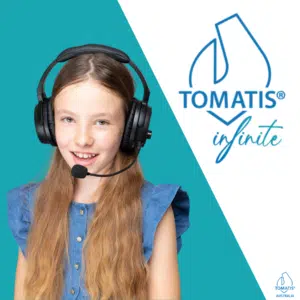“The voice can only reproduce what the ear hears.” ~Dr. Alfred Tomatis
If your child is not achieving language and speech milestones, he or she might be experiencing a delay in these areas. Our precision on how we understand and analyze sound is directly linked to how we reproduce it. As what Dr. Dmitri Christakis’, pediatrician and researcher at Seattle Children’s Hospital, said in his TEDx forum about how important early sensory stimulation helps in brain development.
“…any child born anywhere in the world can learn to speak English fluently. But if she isn’t exposed to certain sounds early in the first few years of her life. She can learn to speak another language later but she’ll never sound like a native speaker. So baby born today in mainland China… can learn to speak fluent Mandarin, but if she doesn’t hear English sounds early in her life, she can learn to speak English later but as we all know…she’ll struggle making certain sounds. It wasn’t because she wasn’t born with that capacity was because her early experience didn’t condition her mind to learn them…”
Early diagnosis is the key
The first thing in evaluating the problem is to rule out hearing or listening problem. Listening as auditory processing issue is the most common cause of language problems. Most of such cases, as well, are caused by underlying conditions such as Auditory Processing Disorder (APD). It is best to seek professional help and get your child assessed to rule out other underlying conditions.
Retrain the brain at an early age using the Tomatis® Method
The Tomatis® Method is an educational program that utilises a neurosensory-integrative approach in addressing developmental delays. It is neuro-sensory as it primarily affects the relationship between the ear, the brain, and the voice in helping people with delayed language acquisition.
Verbal language, in particular, is characterized by tone (pitch, quality, and sound), rhythm (strong, repetitive pattern), and diction (choice of words). Each aspect is marked by more minute, but significant factors in a cascade of sounds. The Tomatis® Method treats the voice of the child or adult by transmitting it via the air and bone conduction. In this manner, the fundamental sounds of language are repetitively stimulating the brain retraining it to “listen” and helping children and adults overcome language difficulties.
Being able to provide interventions during the early childhood years is critical. This is because these are the years where the brain is significantly growing and comprehensively developing. In this way, the Tomatis® Method will be able to make huge impacts for the benefit of your child’s future at a crucial stage of their lives. Tell us your observations in our Listening Checklist page and let your concerns be heard!


